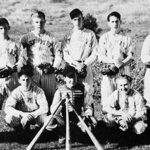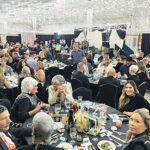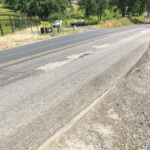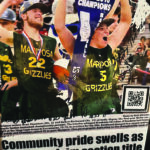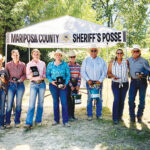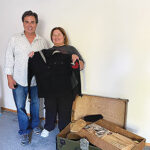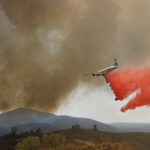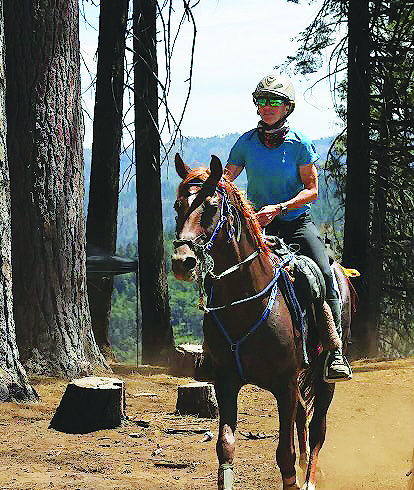
Local veterinarian answers the challenge of the famed Tevis endurance ride
The world-famous Tevis Cup endurance ride has been held since 1955. It’s not a challenge for the faint of heart or the inexperienced, untrained, or unfit rider.
The Tevis Cup, operated by the Western States Trail Foundation and sanctioned by the American Endurance Ride Conference (AERC), is a 100-mile one-day test of rider and steed that typically begins in Lake Tahoe and ends in Auburn, CA.
Jeanette Mero, DVM, more fondly known as “Jay,” has answered the starting bell for the Tevis Cup nine times. She has completed the grueling 100-mile trek over the Sierra on five occasions. Both horse and rider travel a trail that immerses them in an endurance gauntlet, measuring the strength, ability, and conditioning of both.
According to teviscup.org, the ride was first organized by Wendell Robie, an Auburn businessman and devoted rider of the Sierra high country. Many people in the 50s doubted that any modern-day horse could cover the rugged trail from Lake Tahoe to Auburn in a single day.
Robie and a few of his friends proved them wrong in August of 1955. He continued to hold the ride annually thereafter and organized the governing body, Western State Trail Foundation, to preserve the 100-mile course and the ride.
“This is the biggest 100-mile ride in the country. It all started with a bet between a couple of really rich guys. ‘I bet you can’t ride across the Sierra in a single day on your horse,’ kind of sparked the beginning. Then they threw a lot of money at it to keep it going,” Mero explained.
“You didn’t have to be a professional. Now the more modern Tevis contains a handful of professionals. Some of us do the ride for the camaraderie and the accomplishment. There are some riders that this is all they do, but I hope it never changes,” Mero added.
Each rider who completes the 100-mile course within the 24-hour limit and whose mount is judged “fit to continue” is awarded the coveted silver Completion Award Buckle. There’s no prize money for completing the ride. “Prize money is not awarded because it is against the rules of our national governing body (American Endurance Ride Conference) – no prize money may be awarded, and it was set up like back in the very beginning of the sport to safeguard the welfare of the horses. The fear was prize money would incentivize people to override their horses potentially causing severe harm or death to the horses. Mero said.
The Tevis Cup was named for Lloyd Tevis (1824-1899) by his grandson Will Tevis, a prominent San Francisco businessman and early benefactor of the ride. In 1959, Nick Mansfield won the first Tevis Cup, riding an 11-year-old gelding named Buffalo Bill.
The other major trophy (and according to Mero possibly the most prized, depending on who you talk to) is the Haggin Cup. That award is presented to the rider whose horse is in the “most superior physical condition” of the first 10 horses to cross the finish line. The Haggin Cup is named for James Ben Ali Haggin (1821-1914). It was first awarded to Paige Harper in 1964, aboard his six-year-old Arabian gelding Kena.
Mero claimed the coveted Haggin Cup in 2021 on her mare, Lena, who was nine years old that year. “To win the Tevis now has become very competitive,” Mero stated.
The Josephine Stedem Scripps Foundation Trophy was established in 1994 to recognize each of the finishing junior riders for their special achievement. The first junior finisher was David Jay Jr., who completed the third annual ride in 1957.
The Tevis is taxing on both horse and rider, typically only 50 percent make it to the finish line in Auburn. Some years it’s as low as 40 percent of entrants that complete the challenge. Often 175-200 riders from all over the world enter.
“There is intense training. The horse is an athlete that is far superior to the human. It takes three years to train a 100-mile horse. You start with long, slow distances and build them up. It’s all phased, you ride 30 to 50 miles per week. You spend five to eight hours a week in the saddle and a lot of weekends. Sometimes I ride in the dark, since the end of the 100-milers will be in the dark,” Mero explained.
“My two loves are the one-day 100-miler and the multi-day 50-miler. The multi-day ride is a slow-moving freight train and I use it as prep for the one-day events. A good multi-day horse will get stronger every day, Mero added. You can be any size, shape or fitness level to compete, but to be an elite rider you have to be really fit. I run a lot and I know a lot of endurance riders who do marathons and endurance runs. You have to try to balance the fitness level, said Mero. The goal is always to try to get through Tevis.”
Jay competed in the Tevis last July. “During the first part of the ride we go up the ski hill and then head for the high country. You go past Immigrant Gap and then in the middle section of the ride there are three canyons that you hit in the middle of the day. It’s hot and miserable. Now with all the fires, the canopy has burned off, so you’re exposed. You go down to Forest Hill in the afternoon and evening, winding your way along the American River. It’s up and down, up, and down, to the very end; it’s 100 miles of incredible terrain,” she explained.
Mero couldn’t complete the most recent ride, but there was a great consolation prize.
Jay entered the race with her daughter Reyna aboard Clippie, and her son Tristan who was riding Lena. Reyna completed the ride and in fact finished in 12th place. Unfortunately, Tristan’s horse was pulled at about the halfway mark, and “J,” astride her horse Bravo, was pulled at about the 75-mile mark. Mero’s oldest daughter, Elaina and youngest daughter Emma, anchored the support crew.
“I have completed twenty 100-mile rides and competed in thirty,” Mero said. She has competed domestically as far away as Vermont, and internationally in Australia. In 2017 she completed the Tom Quilty 100-mile ride, the Australian version of the Tevis, earning a buckle.
Mero added, “I was an athlete as a kid and in college, so I’m very competitive. There’s still that itch. I didn’t even know the sport existed until I got out of vet school. The relationship you develop with the horse is amazing. You can’t force a horse to do what you want it to do; it has to want to, and when it does it’s just amazing.”
Mero is the owner of Mariposa Equine Services. She studied at Eastern Michigan University and completed her veterinary medicine education at Cornell University. In 2005, she came to Mariposa. Mero worked with a local vet for almost a year before hanging out her shingle in 2006 with her own veterinary services.
“I practiced back east for 10 years. That practice was about 50-50 between cattle and horses. I’ve had my fair share of cattle and cabin cows, so when I got here, I just wanted to concentrate on horses,” Mero said. She also treats sheep, goats, llamas, and kids’ animals, but the majority of her ‘patients’ are of the equine variety.
As long as the Tevis Cup exists, Mero, and possibly her youngsters, will be in the starting lineup.







